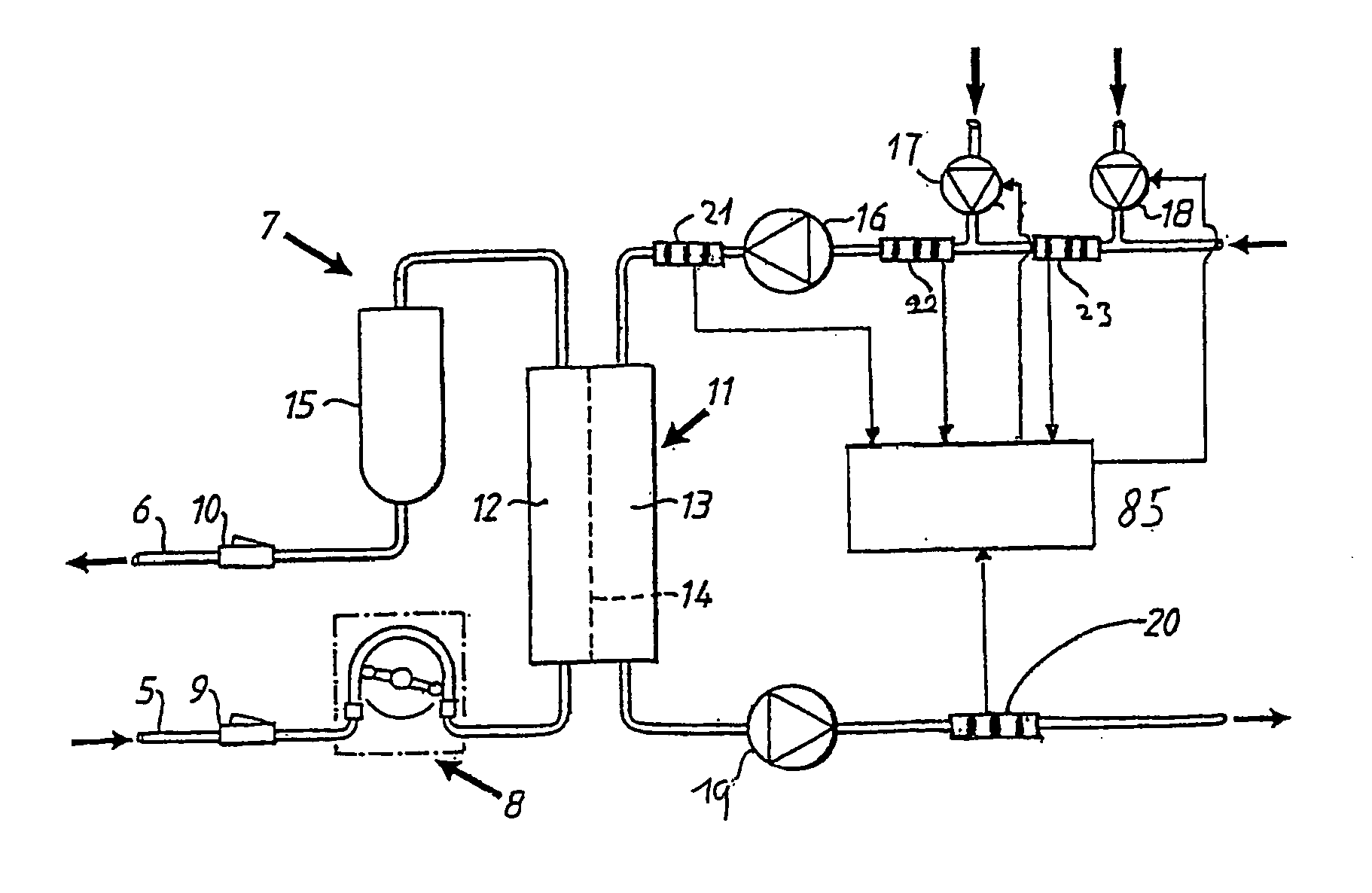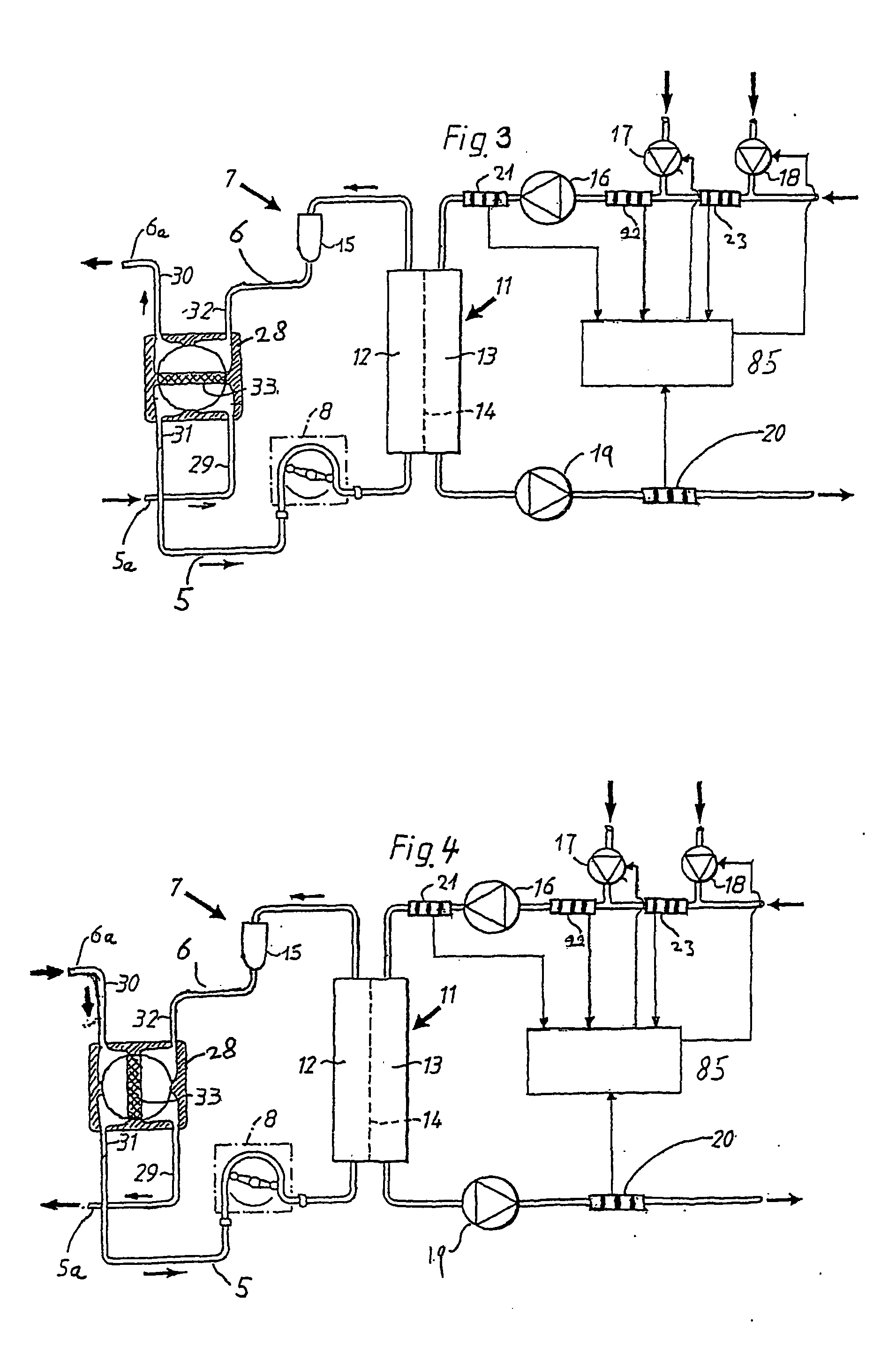Method and apparatus for determining access flow
a flow rate and access flow technology, applied in the direction of solvent extraction, other blood circulation devices, separation processes, etc., can solve the problems of poor flow rate, progressive reduction of treatment efficiency, poor flow of av fistulas, etc., and achieves less expensive, convenient operation, and easy implementation
- Summary
- Abstract
- Description
- Claims
- Application Information
AI Technical Summary
Benefits of technology
Problems solved by technology
Method used
Image
Examples
Embodiment Construction
[0059] For the purpose of this description, a blood access is a site in which a fluid in a tube can be accessed and removed from and / or returned to the tube. The tube may be a blood vessel of a mammal, or any other tube in which a fluid is flowing. The general term blood access as used here includes arterio-venous fistulas, arterio-venous grafts, and dual-lumen catheters amongst other similar types of blood access that allow for an upstream access position and a downstream access position.
[0060] The general terms dialyzer or blood treatment unit as used here include filters for hemodialysis, hemofilters, hemodiafilters, plasmafilters and ultrafilters.
[0061] The fluid flow rate is the flow rate of the fluid in the tube or blood vessel immediately upstream of the blood access, denoted Qa.
[0062] The general term dialysis as used here includes hemodialysis, hemofiltration, hemodiafiltration and therapeutic plasma exchange (TPE), among other similar treatment procedures.
[0063] The ge...
PUM
 Login to View More
Login to View More Abstract
Description
Claims
Application Information
 Login to View More
Login to View More - R&D
- Intellectual Property
- Life Sciences
- Materials
- Tech Scout
- Unparalleled Data Quality
- Higher Quality Content
- 60% Fewer Hallucinations
Browse by: Latest US Patents, China's latest patents, Technical Efficacy Thesaurus, Application Domain, Technology Topic, Popular Technical Reports.
© 2025 PatSnap. All rights reserved.Legal|Privacy policy|Modern Slavery Act Transparency Statement|Sitemap|About US| Contact US: help@patsnap.com



